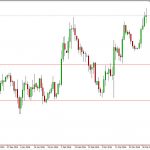Introduction
In Part 1 and Part 2 of this series, I covered 12 of the 30 Dow Jones Industrial Average stocks that I considered the most expensive of the index. With this part 3, I will be looking at 6 additional Dow stocks that for the most part I would consider fully valued to only moderately overvalued. What this suggests is that although I am not inclined to add new money at this point, I would not be anxious or worried about selling them at these levels either.
Successful long-term investors need to be willing to own stocks through the inevitable peaks and valleys that will come along the way. Investing is not easy, and I am a believer that the more times you put yourself in a position where you need to make a decision, the more opportunity you have to make a mistake. Furthermore, price volatility neither hurts you nor does it enrich you – unless you take action. Consequently, unrealized gains or unrealized losses are simply scorecards, but the only score that matters is the one when the game is over.
Although there are many quality companies that make up the 30 Dow Jones Industrial, this particular group of 6 contain many of my favorite companies. This includes those that I am currently long in as well as a few that I have previously owned. And there is also The Walt Disney Company which I have long admired but never seemed to have capital available when its valuation was attractive. Nevertheless, this particular group of Dow stocks has significantly different long-term track records and histories than we saw with the more cyclical stocks reviewed in part 1.
Portfolio Review: Six Fully Valued Stocks in the Dow Jones Industrial Average
The following portfolio review lists the next 6 most expensive stocks in the Dow Jones Industrial Average based on their current blended P/E ratio. However, there are many ways to value a stock in addition to the P/E ratio. Consequently, I suggest the reader also notices the price to cash flow of each of these six Dow constituents. For those investors most interested in dividend income, price to cash flow might be more relevant for higher-yielding dividend paying stocks. Furthermore, when ascertaining valuation, other factors such as expected growth need to be considered as well. I will elaborate more fully in the video below.


















Leave A Comment